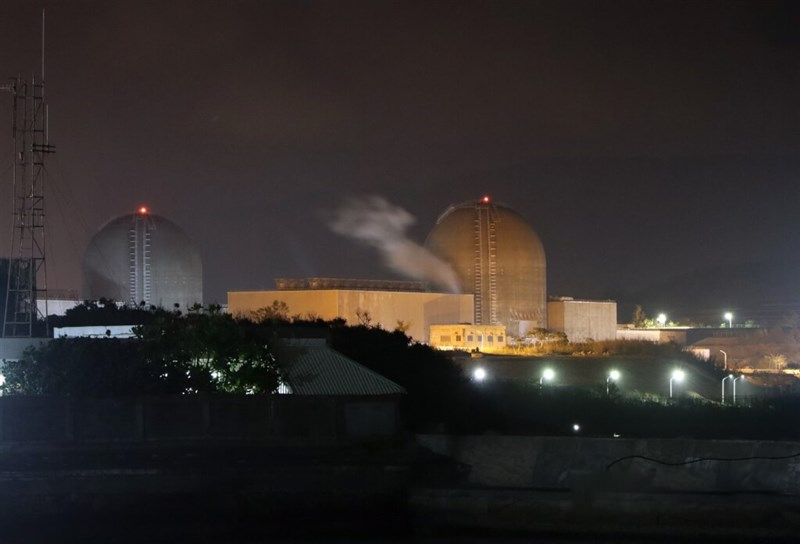On May 17, 2025, Taiwan officially decommissioned its final operational nuclear reactor, Maanshan Unit 2, located in Pingtung County. This move fulfills the Democratic Progressive Party’s (DPP) long-standing commitment to transform Taiwan into a “nuclear-free homeland” by 2025. However, the decision has ignited debates concerning the nation’s energy security, economic implications, and environmental commitments.
Historical Context: Taiwan’s Nuclear Energy Journey
Taiwan’s venture into nuclear energy began in the 1970s, culminating in the establishment of three nuclear power plants: Chinshan, Kuosheng, and Maanshan. Collectively, these facilities contributed significantly to the nation’s electricity supply, with nuclear power accounting for approximately 19% of Taiwan’s electricity generation in 2015.
The Maanshan Nuclear Power Plant, commissioned in 1984, housed two pressurized water reactors (PWRs) supplied by Westinghouse Electric. Each reactor had a capacity of 951 megawatts, making Maanshan the largest nuclear facility in Taiwan.
The Decommissioning Process
The shutdown process for Maanshan Unit 2 commenced on the afternoon of May 17, 2025, with a gradual reduction in power output. By 10:00 PM, the reactor was disconnected from the grid, and by midnight, it had ceased operations entirely.
The subsequent steps involve the removal of fuel rods from the reactor core, a procedure expected to begin within two days post-shutdown. These rods will initially be stored in on-site spent fuel pools, with the entire removal process anticipated to take one to two weeks.
Public Sentiment and Anti-Nuclear Advocacy
The closure of Maanshan Unit 2 was met with celebrations by various anti-nuclear groups in Taiwan. Organizations such as the Taiwan Environmental Protection Union (TEPU) and the Green Citizens’ Action Alliance have been at the forefront of the anti-nuclear movement since the 1980s. Their advocacy intensified following the 2011 Fukushima disaster in Japan, which underscored the potential risks associated with nuclear energy in seismically active regions like Taiwan.
In Taipei, activists gathered outside the Taipower Building, the same location where the first anti-nuclear street march was launched in 1988, to commemorate the nation’s transition to a nuclear-free status.
Energy Security and Economic Implications
While the decommissioning aligns with environmental goals, it raises concerns about Taiwan’s energy security and economic stability. Prior to the shutdown, nuclear power contributed to approximately 6% of Taiwan’s electricity mix.
The gap left by nuclear energy is expected to be filled primarily by liquefied natural gas (LNG) and coal. However, this shift may lead to increased carbon emissions and higher energy costs. A BloombergNEF analysis estimates that Taiwan may need to spend around US$2 billion more annually on LNG purchases by 2030 to meet its energy demands.
Moreover, the reliance on fossil fuels could hinder Taiwan’s commitment to achieving net-zero carbon emissions by 2050. Currently, renewable energy sources account for only about 12% of the nation’s energy consumption, with a target to increase this to 25% by 2030.
Political Landscape and Future Considerations
The DPP’s nuclear phase-out policy, enacted into law in 2017, has faced opposition from parties advocating for energy diversification, including the potential reintroduction of nuclear power. Some lawmakers have proposed referendums to reconsider the extension of nuclear plant operations, citing the growing energy demands driven by industries such as semiconductor manufacturing.
Additionally, the government is exploring emerging technologies like small modular reactors (SMRs) as potential future energy solutions. While SMRs offer advantages in terms of scalability and safety, they are not yet commercially viable.
Environmental and Safety Concerns
Taiwan’s geographical location along active seismic faults presents inherent risks for nuclear energy facilities. The 2011 Fukushima disaster highlighted the vulnerabilities of nuclear plants in earthquake-prone areas, reinforcing public apprehension and influencing policy decisions.
Furthermore, the management of nuclear waste remains a pressing issue. While the problem with outdoor dry storage facilities for spent nuclear fuel has been resolved, a final disposal site must ultimately be found. Dealing with the site selection process and public communications could be challenges facing public authorities.
Conclusion
Taiwan’s transition to a nuclear-free homeland marks a significant milestone in its energy policy, reflecting decades of public advocacy and environmental considerations. However, the move presents challenges in balancing energy security, economic growth, and environmental commitments. As Taiwan navigates this complex landscape, the outcomes of its energy strategies will offer valuable insights for other nations grappling with similar dilemmas.
FAQs
Why did Taiwan decide to phase out nuclear energy?
The decision was influenced by public concern over nuclear safety, especially after the 2011 Fukushima disaster, and the desire to transition to renewable energy sources.
What are the alternatives to nuclear energy in Taiwan?
Taiwan plans to increase its reliance on liquefied natural gas (LNG), coal, and renewable energy sources like solar and wind power.
How will the shutdown affect Taiwan’s carbon emissions?
The increased use of fossil fuels may lead to higher carbon emissions, potentially impacting Taiwan’s goal of achieving net-zero emissions by 2050.
Is there public support for reintroducing nuclear power?
Public opinion is divided, with some advocating for nuclear energy to ensure energy security, while others remain opposed due to safety and environmental concerns.
What are small modular reactors (SMRs), and are they a viable option for Taiwan?
SMRs are a type of nuclear reactor designed for smaller-scale operations. While they offer potential benefits, they are not yet commercially viable and require further research and development.


